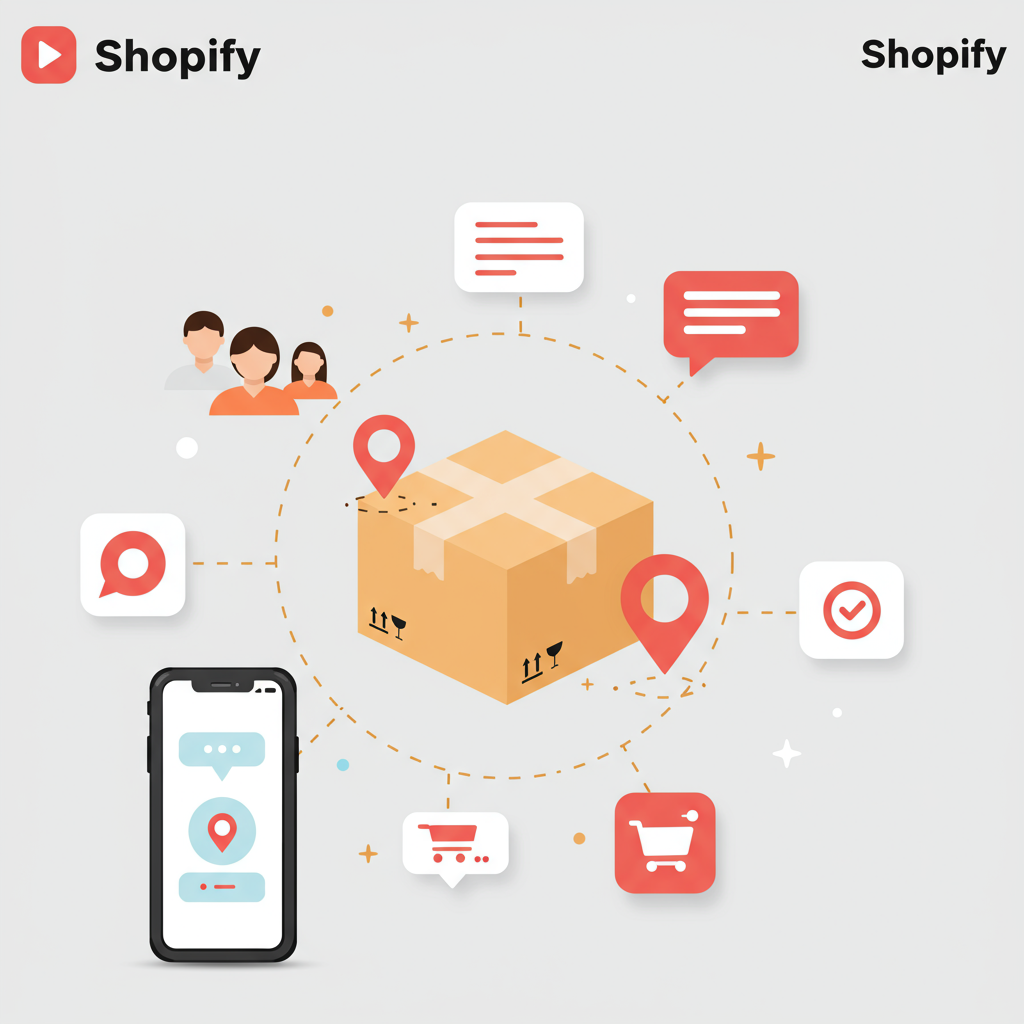Unlock customer satisfaction and operational efficiency by implementing robust order tracking solutions for your Shopify store.
As a Shopify merchant, I know firsthand the excitement of a new order. But that excitement quickly shifts to the crucial phase of fulfillment and, perhaps most importantly, keeping our customers informed.
In today’s e-commerce landscape, customer expectations are higher than ever. They don’t just want their products quickly; they want to know exactly where their package is at every step of its journey.
This is where robust order tracking integration becomes not just a nice-to-have, but an absolute necessity for any successful Shopify store.
I’ve spent a lot of time exploring how to best manage this, and I want to share my insights on why it’s so vital and how you can implement it effectively.
Think about it: when you order something online, don’t you immediately look for a tracking number? Your customers are no different.
Providing clear, real-time tracking information significantly reduces ‘Where Is My Order?’ (WISMO) inquiries, freeing up your customer service team to focus on more complex issues.
Beyond just reducing support tickets, excellent tracking builds trust. It shows your customers that you’re transparent and committed to a smooth delivery experience.
This transparency fosters loyalty, encouraging repeat purchases and positive word-of-mouth referrals, which are invaluable for any growing business.
Shopify, by default, offers basic tracking capabilities. When you fulfill an order and add a tracking number from your shipping carrier, Shopify automatically links it.
Customers can then click this link from their order confirmation email or their order status page to view the carrier’s tracking information.
While this is a good starting point, I’ve found it has limitations. The tracking page is usually on the carrier’s website, which means your customer leaves your branded experience.
There’s also no proactive communication beyond the initial shipping confirmation. Customers have to manually check for updates, which isn’t ideal.
This is precisely why integrating a dedicated order tracking solution is so beneficial. It takes your customer experience from basic to exceptional.
These integrations allow you to centralize tracking information from multiple carriers, provide a branded tracking page, and automate notifications.
There are several types of integrations you can consider, each offering different levels of functionality and control.
Firstly, there are dedicated order tracking apps available in the Shopify App Store. These are often multi-carrier solutions like AfterShip, 17TRACK, or ParcelPanel.
These apps pull tracking data from hundreds of carriers worldwide and present it in a unified, user-friendly format, often on a custom page within your own store.
Secondly, you might integrate directly with specific shipping carrier APIs if you primarily use one or two carriers. This offers deep integration but less flexibility for multiple carriers.
Thirdly, many customer service platforms (like Gorgias or Zendesk) and marketing automation tools (like Klaviyo) offer built-in tracking functionalities or integrations with tracking apps.
This allows you to manage customer inquiries and send targeted marketing messages based on delivery status, creating a truly holistic customer journey.
When I evaluate a tracking solution, I look for several key features. Multi-carrier support is paramount, especially if you ship internationally or use different carriers for various products.
A branded tracking page is non-negotiable for me. It keeps customers on your site, reinforcing your brand identity and potentially leading to additional sales.
Automated notifications via email and SMS are incredibly powerful. Proactive updates about ‘in transit,’ ‘out for delivery,’ and ‘delivered’ statuses delight customers and reduce anxiety.
Analytics and insights are also crucial. Understanding delivery performance, common delays, and customer engagement with tracking pages can help you optimize your shipping strategy.
Ease of setup and use, along with reliable customer support from the app provider, are practical considerations that can save you a lot of time and headaches.
So, how do you go about integrating one of these solutions? My process usually starts with research. I browse the Shopify App Store, read reviews, and compare features and pricing.
Once I’ve chosen an app, the installation is typically straightforward – a few clicks from the App Store. Then, I connect my shipping carriers within the app’s settings.
Next, I configure the notification settings. I decide which events trigger an email or SMS, and I customize the message templates to match my brand’s voice.
I then focus on customizing the branded tracking page. This often involves adding my logo, brand colors, and perhaps some upsell opportunities or links to my customer service.
Finally, and this is critical, I thoroughly test the integration. I place a few test orders, track them through the system, and ensure all notifications are sent correctly and the tracking page functions as expected.
The impact of a well-integrated order tracking system on my business has been significant. My customers feel more informed and valued, leading to higher satisfaction scores.
Operationally, my team spends less time answering basic tracking questions, allowing them to focus on more complex customer needs and sales opportunities.
It also helps in proactively addressing potential issues, like delayed shipments, before they become major problems for the customer.
What are your thoughts on this article? Have you implemented order tracking, and what has your experience been like?
In conclusion, investing in a robust order tracking integration for your Shopify store is one of the smartest decisions you can make.
It’s not just about providing a tracking number; it’s about delivering peace of mind, building lasting customer relationships, and streamlining your operations.
By embracing these tools, you’re not just selling products; you’re delivering an exceptional, transparent, and trustworthy shopping experience that keeps customers coming back.
I truly believe that a seamless post-purchase experience, anchored by excellent order tracking, is a cornerstone of modern e-commerce success.






